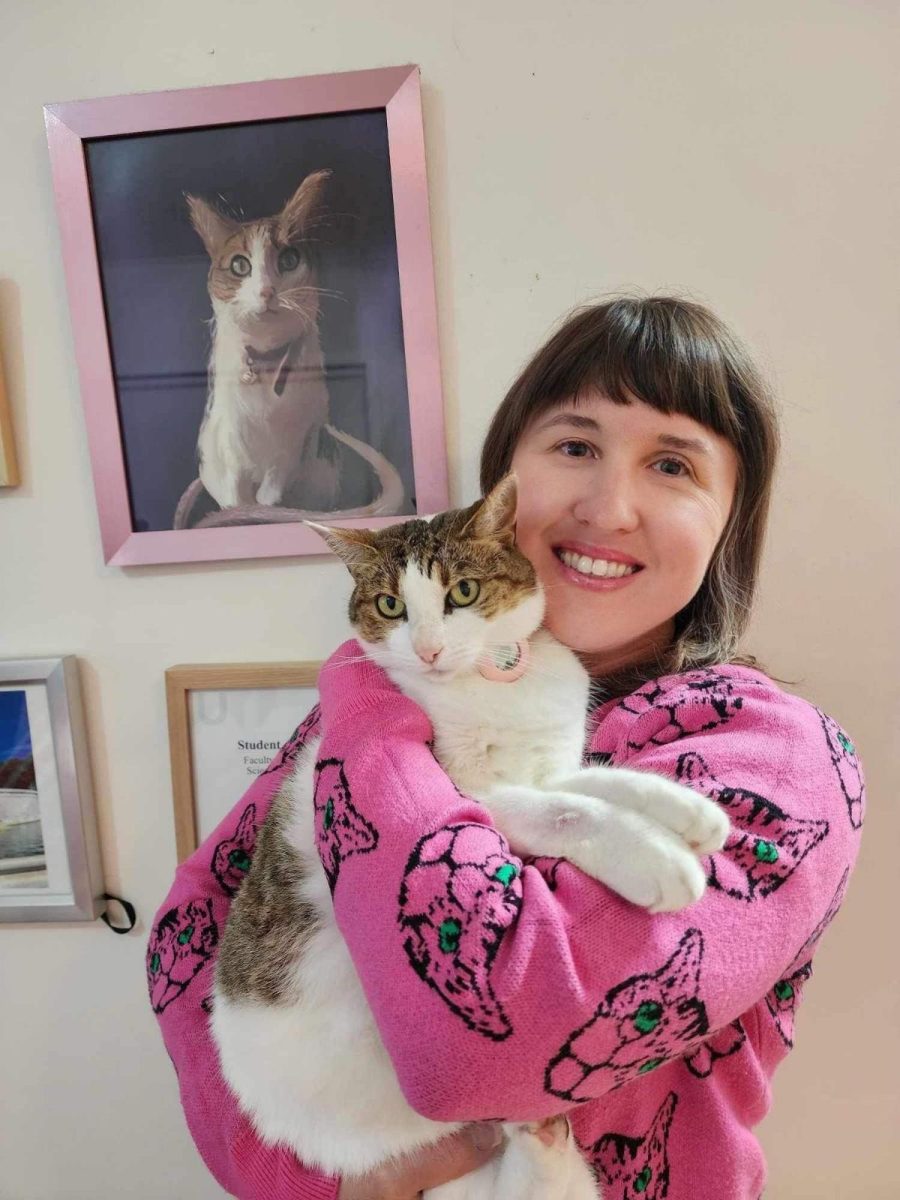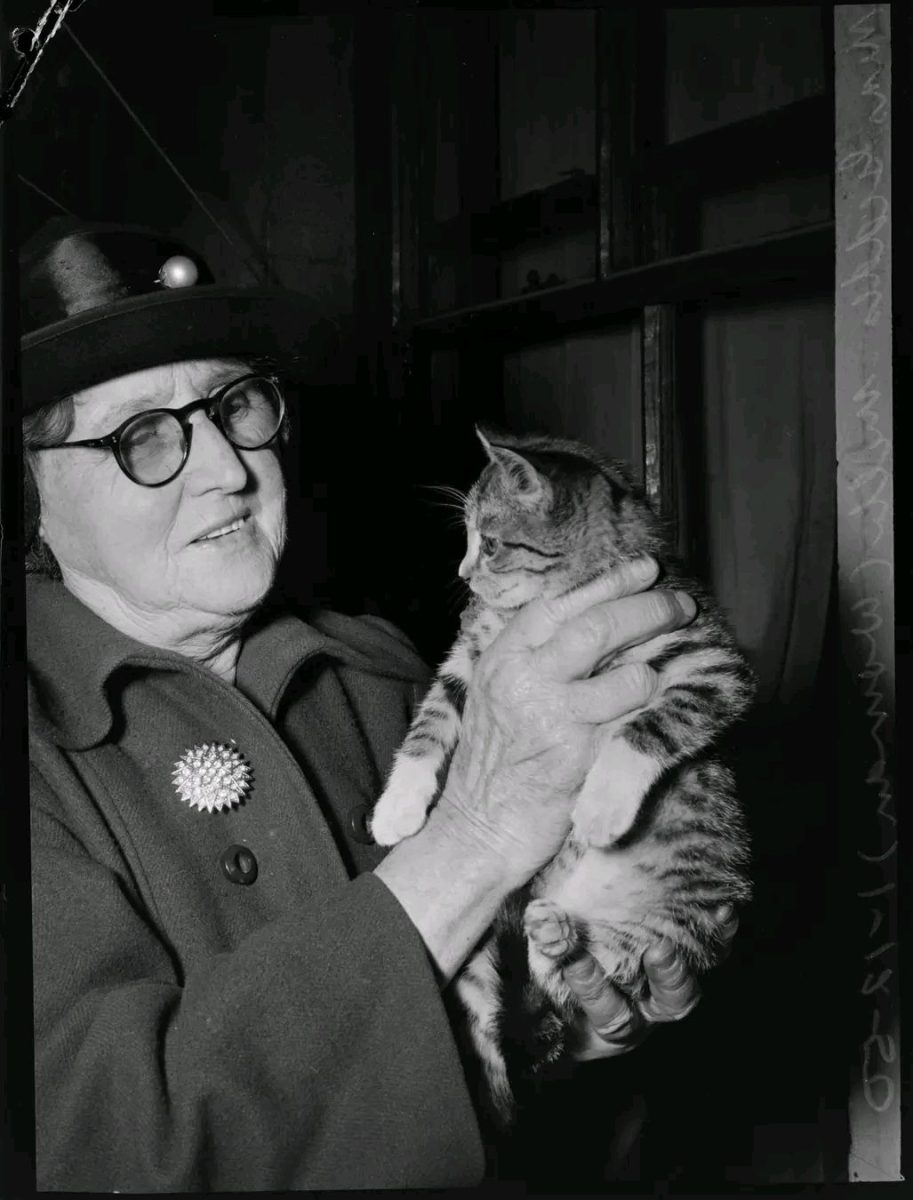
Merimbula’s Dr Jodie Stewart is ably assisted by her cat Poppy while she researches the history of felines in Australia. Photo: Supplied.
So what is the purr-fect (sorry) job? Dr Jodie Stewart, as well as her 1000 cat-obsessed followers on social media, thinks she may have found it, because she is possibly our country’s first cat historian.
“It’s a self-described cat historian, it’s not an official title,” the NSW South Coast university tutor laughed.
“The cat-loving community is very big and very supportive. There wouldn’t be a cat lover worth their salt that wouldn’t want a job looking at cat pictures every day!”
Since 2023, Dr Stewart delved into the archives to research cats in Australia’s history. She has been questioning “how we have loved and been loved by cats”, what our history would look like with cats in the centre, as well as how they have shaped us and how we have shaped them.
“I think it has the makings of a fabulous book with wonderful photographs and fabulous stories,” she said.
“Although cats are cute and sweet and cuddly, we have an interesting relationship with cats in Australia.
“They can be a divisive issue and some people see cats as an ecological scourge on the country, and I’m not dismissing that side of the conversation.”
One of the most famous cats from Australia’s history is Trim. He was Matthew Flinders’ “fellow circumnavigator”, Dr Stewart said, who accompanied his owner on his voyage around Australia in 1801.
Sadly, Trim went missing after Flinders was imprisoned by the French on the island of Mauritius in 1803. Flinders was so heartbroken he penned a book to Trim, a book that is still able to be bought today, Dr Stewart said.
However, she also said that while there were five statues dedicated to Trim in the world, there were no statues dedicated to Bungaree, the First Nations diplomat who circumnavigated Australia with Flinders and whose skilled diplomacy allowed them to have unfettered passage around the country. Bungaree died in Sydney in 1830.
“The story of Trim, it’s cute, it’s great, but it can feel to be a bit of a diversion,” Dr Stewart said.
“I think all of these stories can be told together to create a more fulsome and nuanced pictured of this history.”
She also brought up another story to do with the hysteria around the stray cat populations in Sydney and Melbourne around the middle of the last century.

Francis Geddes holds one of her much-loved cats in December 1950. Photo: Mitchell Library, State Library of NSW.
There was a woman in Melbourne by the name of Francis Geddes who, through the 1940s to 1960s, would care for her city’s cat population by spending hours preparing rabbits then carting 18 kg of meat around the city to feed 200 strays almost every night.
Not only did this occur at a time when there was a shortage of raw proteins due to meat worker strikes, she was also attacked and abused due to her work.
But the cat craze continued. Dr Stewart said cats were written about frequently in Australian media – stories of cats at shops, hospitals, train stations or swimming at Sydney’s Balmoral Beach.
She has received a variety of responses when telling people about her work, ranging from apathy or confusion to “horrifyingly hostile” – the latter of which can be from the environmental anti-cat side of the argument.
However, the vast majority of people have expressed enthusiasm and curiosity.
“I think it’s the ascendancy of the cat meme that has rendered cats a little bit frivolous!” she said.
“They are seen as not a serious topic for academic exploration. There are people who think that way and I’m hoping too change their minds.”
Of course, where would the Merimbula resident be without her own furry inspiration? Dr Stewart has two cats and describes one, Poppy, as her “muse”.
“The love she gives is like being dipped in pure sunshine,” she said.
“It’s quite bizarre! I was never a cat person 10 to 15 years ago, but this little cat came into my life and she’s really changed my world. I feel very special and very blessed that she chose me.”
To follow her research journey, visit her Instagram account here, her Substack account here or her Facebook account here.







